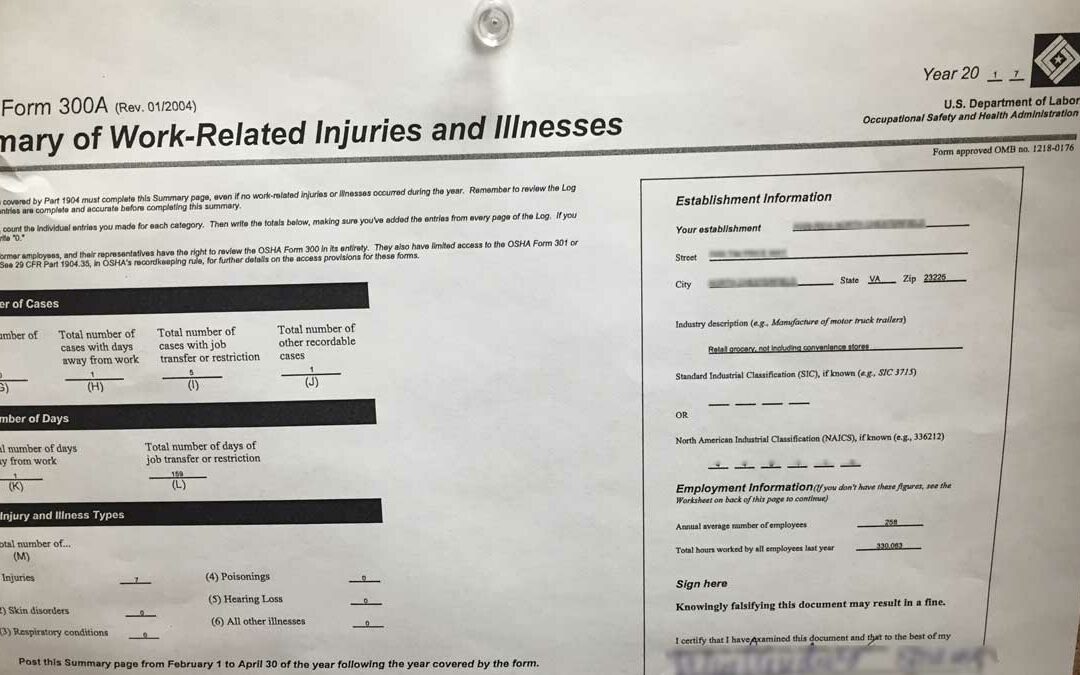Is your workplace safe? Are you and your coworkers being properly protected from harm? Or are injuries and illnesses a common problem?
You can find the answers to these questions every year from February 1st through April 30th. That’s because, in most cases, your employer is required to post Form 300A from the U.S. Occupational Safety and Health Administration (OSHA) during this time period. Go to the bulletin board in your store, plant, medical facility or other jobsite and you should find OSHA 300A, detailing the statistics from 2017. If it’s not there, please tell your shop steward or union rep right away.
On this form, you’ll see:
- Whether there were any deaths or injuries due to hazards in the workplace over the past year
- How many days employees had to miss work as a result of occupational-related injuries or illnesses
- How many days workers had to be reassigned to different jobs because injuries kept them from being able to perform their regular responsibilities
- Whether there were any skin disorders, respiratory conditions, poisonings, cases of hearing loss, or other illnesses incurred on the job.
Employers are required to fill out a log of work-related injuries to classify incidents and note the severity and extent of each case throughout the year. Form 300A is the annual summary of the log, listing numbers per workplace, but not the names of those injured or their specific ailments. Each form must be specific to each job site, whether it’s an individual store, nursing home, medical center, meat processing plant or other facility.
According to OSHA, “An injury or illness is considered work-related if an event or exposure in the work environment caused or contributed to the condition or significantly aggravated a preexisting condition. Work-relatedness is presumed for injuries and illnesses resulting from events or exposures occurring in the workplace, unless an exception specifically applies.” These are the categories covered:
- Injuries involve any wound or damage to the body resulting from an event in the work environment, such as cuts, bruises, fractures, burns, and sprains and strains resulting from slips, trips or falls.
- Skin diseases or disorders are conditions such as contact dermatitis, eczema, rashes or blisters that are caused by work exposure to chemicals, plants, or other substances.
- Respiratory conditions are illnesses associated with breathing hazardous biological agents, chemicals, dust, gases, vapors, or fumes at work. These can include silicosis, asbestosis and occupational asthma.
- Poisoning includes disorders resulting from abnormal concentrations of toxic substances in the body, such as lead, mercury, cadmium, arsenic and carbon monoxide.
- Hearing loss involves cases where workers were exposed to noises so loud and for a sufficient length of time that their hearing is impaired.
- All other illnesses is a broad category that includes sunstroke, heat exhaustion, freezing, frostbite, radiation exposure, and bloodborne diseases such as HIV/AIDS and hepatitis B and C.
If your workplace has a high number of injuries and illnesses in any of these categories, please bring this to the attention of your shop steward and union representative. Under many Local 400 contracts, shop stewards serve on Safety Committees and are in a position to demand action to remedy problem areas. As always, the best defense against workplace hazards are active, engaged and vigilant members.

